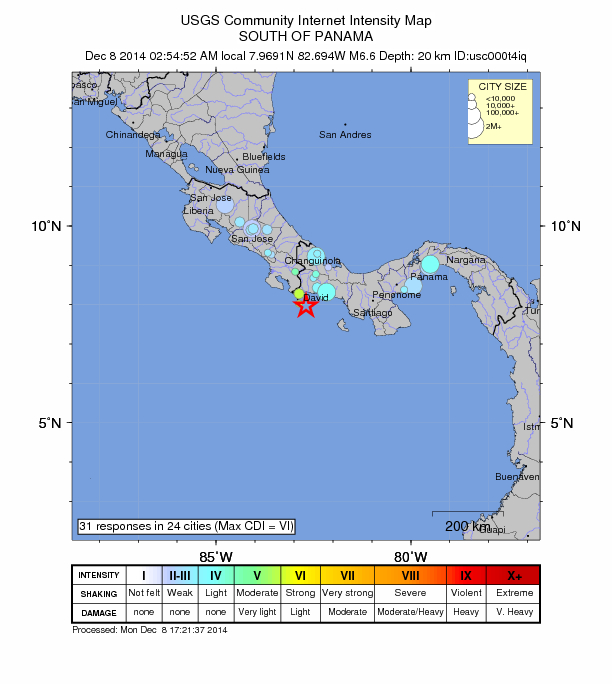
© USGS
A magnitude-6.6 earthquake struck off the coast of Panama on Monday,
the second strong quake to rock the country in three days. The tremor was centered 20 kilometers (12 miles) south-southeast of the Punta de Burica peninsula, near the border with Costa Rica, and hit just before 4:00 a.m. local time, according to the
U.S. Geological Survey.
Despite the earthquake's magnitude and widespread shaking, the director of Panama's National Civil Defense Service, José Donderis,
indicated via Twitter that there were no reports of damage. The epicenter of the quake, which occurred at a depth of 20 kilometers, was about 58 kilometers south-southwest of the city of David, Panama's third-largest city with a population of about 145,000 people. Any aftershocks are expected to be less intense, however, they could be strong enough to cause damage to infrastructure possibly weakened by the main earthquake.
Comment: Within only the last few weeks, in just this one location (off the Indonesian coastline), there have been 6.9 and 7.3 magnitude earthquakes! This phenomena is growing in frequency and intensity.
To understand why this is happening, read Earth Changes and the Human-Cosmic Connection. Here's a relevant excerpt: